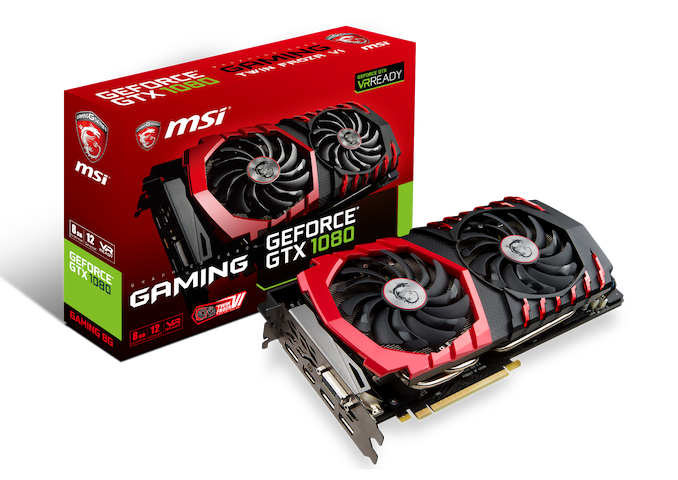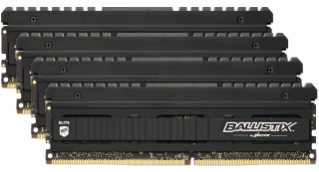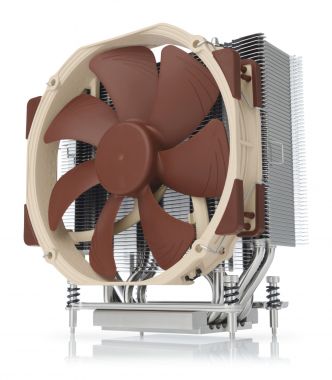The EVGA Z590 Dark Motherboard Review: For Extreme Enthusiasts
by Gavin Bonshor on October 15, 2021 9:00 AM ESTBoard Features
The EVGA Z590 Dark is an E-ATX motherboard that is primarily designed for pushing Intel's 11th generation Rocket Lake processors to the limit using sub-ambient cooling methods. It does have plenty of premium features including two full-length PCIe 4.0 slots operating at either x16/x0 or x8/x8, with a half-length PCIe 3.0 slot electronically locked down to x4. The Z590 Dark has a transposed LGA1200 socket with two memory slots horizontally mounted above it with support for DDR4-5333 with a maximum capacity of up to 64 GB.
For storage, the EVGA Z590 Dark includes three M.2 slots, with one PCIe 4.0 x4 M.2, one PCIe 3.0 x4 slot M.2, one PCIe 3.0 x4/SATA M.2, with a PCIe 3.0 x4 U.2 port, and a total of eight SATA ports. Six of the SATA ports are powered by the chipset and support RAID 0, 1, 5, and 10 arrays, while the other two are driven by an ASMedia ASM1061 SATA controller.
On the overclockers toolkit is a pair of Probelt voltage monitors with cables for these supplied in the accessories bundle, with dual two-digit LED debuggers, a power button, a reset button, a slow mode switch, a safe boot button, and a triple BIOS selector switch. Cooling options consist of eight 4-pin headers, with two designated for CPU fans, and six for chassis fans or water pumps.
| EVGA Z590 Dark E-ATX Motherboard | |||
| Warranty Period | 3 Years | ||
| Product Page | Link | ||
| Price | $600 | ||
| Size | E-ATX | ||
| CPU Interface | LGA1200 | ||
| Chipset | Intel Z590 | ||
| Memory Slots (DDR4) | Two DDR4 Supporting 64 GB Dual-Channel Up to DDR4-5333 |
||
| Video Outputs | 1 x HDMI 2.0b 1 x DisplayPort 1.4 |
||
| Network Connectivity | 2 x Intel I225-V 2.5 GbE Intel AX201 Wi-Fi 6 |
||
| Onboard Audio | Realtek ALC1220 EVGA NU SV3H615 |
||
| PCIe Slots for Graphics (from CPU) | 2 x PCIe 4.0 (x16, x8/x8) | ||
| PCIe Slots for Other (from PCH) | 1 x PCIe 3.0 x4 | ||
| Onboard SATA | Six, RAID 0/1/5/10 (Z590) Two (ASMedia) |
||
| Onboard M.2 | 1 x PCIe 4.0 x4 1 x PCIe 3.0 x4 1 x PCIe 3.0 x4/SATA |
||
| Onboard U.2 | 1 x PCIe 3.0 x4 | ||
| Thunderbolt 4 (40 Gbps) | N/A | ||
| USB 3.2 (20 Gbps) | 1 x USB Type-C (Rear panel) | ||
| USB 3.2 (10 Gbps) | 4 x USB Type-A (Rear panel) 1 x USB Type-C (One header) |
||
| USB 3.1 (5 Gbps) | 2 x USB Type-A (Rear panel) 4 x USB Type-A (Two headers) |
||
| USB 2.0 | 6 x USB Type-A (Three headers) | ||
| Power Connectors | 1 x 24-pin Motherboard 2 x 8-pin CPU 1 x 6-pin PCIe |
||
| Fan Headers | 2 x 4-pin CPU 6 x 4-pin Chassis |
||
| IO Panel | 2 x Antenna Ports (Intel) 1 x PS/2 Combo port 1 x USB 3.2 G2x2 Type-C 4 x USB 3.2 G2 Type-A 2 x USB 3.2 G1 Type-A 2 x RJ45 (Intel) 1 x HDMI 2.0b Output 1 x DisplayPort 1.4 Output 5 x 3.5 mm Audio jacks (Realtek) 1 x S/PDIF Optical output (Realtek) 1 x Clear CMOS button |
||
There's plenty of connectivity on the rear panel including one USB 3.2 G2x2 Type-C, four USB 3.2 G2 Type-A, and two USB 3.2 G1 Type-A ports. If this isn't enough for users, EVGA includes one USB 3.2 G2 Type-C header (one port), and three USB 2.0 header (six ports) available to use. Other input and output on the rear panel include five 3.5 mm audio jacks and S/PDIF optical output powered by a Realtek ALC1220 HD codec and EVGA NU SV3H615 amplifier pairing, while EVGA also includes one HDMI 2.0b and one DisplayPort 1.4 video output.
Focusing on networking, there are two Ethernet ports, both controlled by individual Intel I225-V 2.5 GbE controllers, while an Intel AX201 Wi-Fi 6 CNVi offers both wireless and BT 5.2 connectivity.
Test Bed
With some of the nuances with Intel's Rocket Lake processors, our policy is to see if the system gives an automatic option to increase the power limits of the processor. If it does, we select the liquid cooling option. If it does not, we do not change the defaults. Adaptive Boost Technology is disabled by default.
| Test Setup | |||
| Processor | Intel Core i9-11900K, 125 W, $374 8 Cores, 16 Threads 3.5 GHz (5.3 GHz Turbo) |
||
| Motherboard | EVGA Z590 Dark (BIOS 1.05) | ||
| Cooling | Corsair iCue H150i Elite Capellix 360 mm AIO | ||
| Power Supply | Corsair HX850 80Plus Platinum 850 W | ||
| Memory | G.Skill TridentZ DDR4-3200 CL 14-14-14-34 2T (2 x 8 GB) | ||
| Video Card | MSI GTX 1080 (1178/1279 Boost) | ||
| Hard Drive | Crucial MX300 1TB | ||
| Case | Corsair Crystal 680X | ||
| Operating System | Windows 10 Pro 64-bit: Build 20H2 | ||
We must also thank the following:


















27 Comments
View All Comments
YB1064 - Friday, October 15, 2021 - link
If this board is built for LN2 overclocking, then a review without testing this capability is incomplete. Come on guys, you used to do this in the past. What gives?Ryan Smith - Friday, October 15, 2021 - link
Speaking pragmatically, when we do that kind of testing, we're at serious risk of burning out a $500 CPU. For a comprehensive overclocking-focused article that may make sense, but for single motherboard review that's not a very good use of our resources.To be sure, it would be fun to do - and ideally I'd like to make it happen. But there are some niche features/configurations that even we can't justify the cost of testing.
niva - Friday, October 15, 2021 - link
Do people actually run their systems with LN2 cooling? Or is it something that just exists to be used temporarily when doing extreme benchmarks?I've been building PCs since the 90s and never even bothered with liquid coolers, never mind LN2. Seems like a complete gimmick and as you stated, risky. Not just for the CPU resources, but potentially dangerous to the people setting up the system.
shabby - Friday, October 15, 2021 - link
If it's targeted for ln2 that means they can charge a pretty penny for it, that's all it means.Ryan Smith - Friday, October 15, 2021 - link
You're correct: no one is using LN2 on a day-to-day basis. It's mostly for short use periods for extreme overclocking.amnesia0287 - Friday, October 15, 2021 - link
The stuff they change to make it work with LN2 still benefit everyone else, just less. Cause basically what they do is swap in higher quality chips that are better hardened. They tighten up the tolerances (which is why it’s only got 2 ram slots, to make the traces shorter and more consistent).Same with the upgrade to the power delivery and pci traces.
Can a human tell the difference from any of these things? No way, but they will certainly help a cpu last longer and run more stable. It just doesn’t make sense to spend on any current pc hardware with all the changes about to pop off. Just pci5 and the addition of cxl are gonna be huge.
Oxford Guy - Saturday, October 16, 2021 - link
‘Extreme overclocking’ = extreme marketing techniquefrozen_water - Friday, October 15, 2021 - link
Meh, having owned the z490 dark kp edition I think these boards are way overrated. Does this one still have a silkscreen URL for a non-existent TiN guide? Does this still not support Intel’s cryo/TEC coolers? It’s literally the most expensive oc motherboard out there and it lacks features that other much cheaper ones have.Silver5urfer - Friday, October 15, 2021 - link
Unfortunately TiN is retired from EVGA. He moved to US I guess due to family. Now those nice amazing articles on Xdevs are nowhere since Z490 series. The only person now covering this extensively is Luumi. Check his content, he also makes Win7 installs just like TiN as well.I'm eying this board with 10900K or X570 DARK if the AMD board also drops USB then I'm skipping Ryzen.
amnesia0287 - Friday, October 15, 2021 - link
OC motherboards mostly all a waste of money for most people. But just looking at the vrms, power delivery, tight uniform ram traces and such. They are extremely focused on pure electrical stability/consistency/reliability. Though certainly not to the same degree, it is built similarly to military hardened pc gear in some ways.